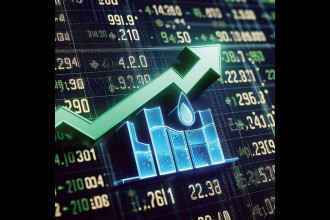
The financial markets are filled with stories of comebacks and transformation. These stories rejuvenate the trader’s mindset and provide hope in times of struggle and grief. One such story doing the rounds is that of copper. When the pandemic hit in early 2020, numerous asset categories bore the brunt and slipped into a downtrend rarely seen in the archives of history. However, with the global economy now back on track and entering into a new normal, copper has found its reverse gear and jumped to pre-pandemic levels. In terms of statistics, copper has increased a stupendous 125% and is one of the few commodities that has reached record high prices. This article tries to dissect the contributing factors behind the rise in the price of copper.
Decelerating growth in supply of copper
The mining output for copper grew by just 123% over the past three decades, far more slowly than other metals. In comparison to other metals over the same period, aluminium and iron ore production increased by 256% and 257%, respectively. This slow growth is attributed to various factors. Between 2010 and 2016 when copper prices declined by 58%, it was close to the metal’s cost of production. It discouraged new investments in mining and processing facilities. Also, the copper content of copper ore has declined over time. The cost of extracting copper has been on a rise and a large part of that cost includes energy although the total discovered reserves of copper have steadily climbed.Relation between energy and copper
When we say mining and refining metals, we generally associate it with an element of energy-intensive business. The value of copper has a strong inclination to show a positive correlation with the price of WTI crude oil. The underlying assumption for this relationship is that higher crude oil and natural gas prices have made mining and refining copper more expensive and vice versa. This assumption was valid in the past. Contrarily, the sharp increase in oil and natural gas prices in 2021 was due to the rising demand for copper fuelling interest in an alternative form of technologies including wind, solar, batteries and electric vehicles. All the preceding forms of technologies utilise the use of copper in some form or the other. The case may be true in the Asian and Europe continents, where 75% of the global population lives and also where natural gas prices have increased by 7-8 times the North American levels.Energy shift
This energy shift may drive strong demand for copper and other metals. During the last decade, the cost of solar energy fell by nearly 98% while the cost of batteries declined by a similar number. If the trend continues over the next decades, it will be possible to live with adequate, carbon-free energy but one that requires a great deal of copper wiring. This shift has become apparent lately. The sales of electric vehicles (EVs) jumped by 160% worldwide to 2.6 million vehicles in 2021. Accounting for less than 4% of global vehicle sales, if the EVs continue to grow at this rate, increasing their market share against the combustion-powered cars, it will only imply that the demand for copper and other metals will skyrocket. EV cost has been slumping rapidly and a time may come when EVs become less expensive than a vehicle powered by a combustion engine in the latter half of this decade.Influence of China
Responsible for being the largest importer of copper, every year China buys about 40-50% of the freshly mined copper. While only some of the raw copper is used domestically, a major portion of the imports is re-exported in the components of intermediate and finished products. The growth rate in the manufacturing sector of China is highly correlated with the current prices of copper and future prices three to four quarters ahead. The growth rate of China has shown a remarkable turnaround, especially in 2021. Having been at the pivotal point during the pandemic, copper prices rebounded in 2021. Although the pace of industrial growth in China had slowed significantly, the current gains are a result of the Russian-Ukraine conflict where Russia supplied 850,000 tonnes of copper in 2021, around 5% of the global production.Paradigm shift in consumer demand
Consumers in the USA spent 18% more on manufactured products but only 6% more on services between the period December 2019 and December 2021. Given the figures of the US and other markets, consumers shifted to purchase more manufactured products including electronics and other items that involve a significant copper content.In Closing
As we tread onto a normal mode, most global consumers appear to shift their spending to manufactured goods and away from luxurious goods. This will only increase the price of copper since the metal is utilised in most manufactured goods. Coupled with the above points and a strong wave of rekindled hopes for the global economy, the price of copper will undoubtedly increase even further in both the short and long term. READ ALSO:
Published Date: June 4, 2022, 12:00 am
Post Comment
RELATED Commodity Perspective




